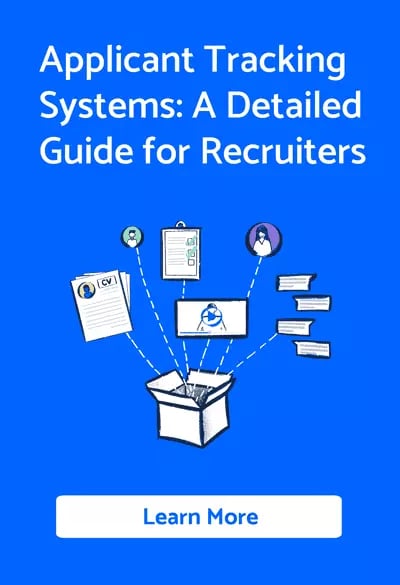In the bustling ecosystem of startups, one critical challenge that most businesses grapple with is recruitment. Hiring the right talent is pivotal to ensure a company’s growth trajectory, but the costs associated with recruitment can put a strain on a startup’s limited resources.
The primary cost incurred is often recruiter fees, which, according to the Recruitment & Employment Confederation, can average between 15-20% of the candidate’s first annual salary.
As a startup, avoiding recruiter fees can significantly reduce the cost of hiring, freeing up resources that can be invested elsewhere in your business. How can startups circumvent these fees?
This article will explore 21 ways to avoid recruiter fees, providing you with data-driven insights to optimise your recruitment process.
1. In-House Recruiting
Establishing an in-house recruitment team can eliminate the need for external recruitment agencies. A LinkedIn report suggests that 38% of companies consider their in-house recruitment team as the most effective source of high-quality candidates.
Additionally, it’s worth noting that when companies hire internally, the employees are 20% less likely to leave the organisation, according to a study published in the American Sociological Review.
2. Employee Referral Programmes
Employee referrals can reduce the time to hire by 50% compared to candidates who came through a job board, according to Jobvite.
Moreover, referred candidates have a 45% retention rate over two years compared to 20% from job boards and 14% from career sites.
By incentivising employees to refer quality candidates, you can save on recruiter fees and benefit from a more efficient hiring process.
3. Social Media Recruitment
A survey by Glassdoor reveals that 79% of job seekers use social media during their job search.
Leveraging platforms like LinkedIn, Facebook, and Twitter can be a cost-effective way of job postings. Moreover, Aberdeen Group found that 73% of millennials found their last position through a social media site, underscoring the importance of this avenue.
4. Job Boards
While using job boards incurs a small fee, it’s significantly less than recruiter fees. CareerBuilder’s statistics indicate that 64% of job seekers use online job boards to find employment opportunities. Moreover, an Indeed study found that 72% of employers have hired a candidate through an online job board, suggesting a high success rate.
5. Internship Programmes
Internships are a cost-effective way of nurturing talent in-house. According to NACE, about 56% of interns convert to full-time employees, saving on recruitment costs. Additionally, the study found that companies that regularly convert interns to full-time employees have a 15% lower turnover rate.
6. Networking Events
Jobvite’s study suggests that 40% of hires come from networking. Hosting or attending industry events can help you meet potential candidates, avoiding recruiter fees. Furthermore, the study found that hires from networking events stay with the company 20% longer than hires from other sources.
7. University Partnerships
Partnerships with universities can provide a steady stream of fresh talent. The High Fliers report reveals that over 32% of graduate vacancies are filled by candidates who have already worked for the organisation as interns. Moreover, a study by the Society for Human Resource Management (SHRM) found that university hires have a 25% higher retention rate than hires from other sources.
8. Industry Job Fairs
Job fairs are excellent platforms to meet many potential candidates in one day. A Society for Human Resource Management survey found that 67% of HR professionals deem job fairs effective for employer branding and recruitment. Furthermore, 50% of the companies surveyed confirmed hiring from a job fair, proving it a valuable method for avoiding recruiter fees.
9. Online Talent Communities
Talent communities allow potential candidates to express interest in your company, making it a ready talent pool. Allegis’ report states that 64% of employers have improved their quality of hire through talent communities.
These communities can provide a consistent candidate pipeline and create a sense of brand loyalty, with 80% of members more likely to advocate for the brand, according to IDC.
10. Applicant Tracking Systems (ATS)
Applicant Tracking Systems like GoHire can automate the recruitment process, making it more efficient. According to Capterra, companies that use ATS reduce their hiring time by 20%.
Additionally, GoHire reports that companies using their ATS reduce hiring costs by an average of 27%. This data underlines the crucial role of ATS in streamlining hiring and helping startups avoid recruiter fees.
11. Recruitment Process Outsourcing (RPO)
While RPO involves an initial investment, it can reduce overall hiring costs. A study by Everest Group shows that companies using RPO experience a 50% reduction in cost per hire. Moreover, these companies have seen an increase in the quality of their hires by 22%, ensuring that the investment in RPO is well justified.
12. Freelance Hiring Platforms
Upwork and Fiverr are excellent platforms for hiring freelance talent at a fraction of the cost of a full-time employee. A study by Oxford Economics found that businesses using freelance platforms can save up to 45% on hiring costs, making them a viable option to avoid recruiter fees.
13. AI-Driven Hiring Tools
Artificial Intelligence hiring tools can automate parts of the recruitment process, reducing costs. LinkedIn’s Global Recruiting Trends report indicates that 76% of recruiters believe AI’s impact on recruiting will be at least somewhat significant.
Moreover, a study by McKinsey suggests that AI can reduce hiring costs by up to 20%, making it an essential tool for startups seeking to avoid recruiter fees.
14. Building a Strong Employer Brand
Building a strong employer brand can attract quality candidates, reducing the need for recruitment agencies. LinkedIn’s data reveals that a strong employer brand can reduce cost per hire by up to 50% and lowers turnover rates by 28%.
15. Passive Candidate Recruitment
Sourcing passive candidates directly can help avoid recruiter fees. According to LinkedIn, 70% of the global workforce is made up of passive talent who aren’t actively job searching, and a substantial 87% of passive candidates are open to new opportunities.
16. Collaborating with a Co-Working Space
Co-working spaces are often filled with freelancers and startups. Building relationships with these spaces allows you to tap into their talent pool when vacancies arise, effectively avoiding recruiter fees.
17. Utilising a Talent Pool Database
Building a talent pool allows you to have a ready source of potential candidates. According to Capterra, organisations that utilise talent pools have seen a 20% decrease in time to hire.
18. Skills-Based Hiring
Skills-based hiring focuses on candidates’ skills rather than their CVs, expanding your potential candidate pool. A report from Harvard Business School found that skills-based hiring reduces time to hire by 25% compared to traditional hiring methods.
19. Employee Advocacy
Employees can become powerful recruitment tools by promoting your organisation on their personal social media accounts. Per a study by LinkedIn, 58% of people are more likely to investigate a company’s employment opportunities if they see a job posting shared by someone they know.
20. Involving your Entire Team in the Hiring Process
A team-based hiring process can lead to better hires and reduced turnover, according to Harvard Business Review. Involving more people in hiring decisions can lead to a better culture fit and lower recruitment costs.
21. Utilising Government Hiring Schemes and Grants
Governments often offer hiring schemes and grants that can reduce hiring costs. For example, in the UK, the government offers the Kickstart Scheme, which provides funding to employers to create job placements for 16 to 24 year olds.
Let’s Wrap Up
In conclusion, startups have a multitude of ways to avoid recruiter fees while still attracting top talent. The techniques detailed above, backed by data and metrics, offer a pathway towards more strategic, cost-effective hiring.
By understanding your specific hiring needs and leveraging these methods, you can build a robust, cost-effective recruitment strategy.
The goal isn’t merely to save on recruiter fees but to onboard the best talent that will drive your startup’s growth and success. Armed with these data-driven insights, you’re better equipped to make informed decisions that will fundamentally shape your organisation’s future.




